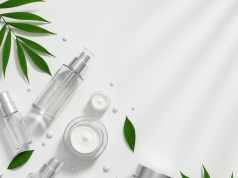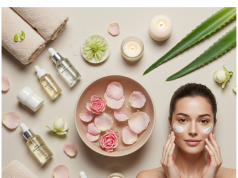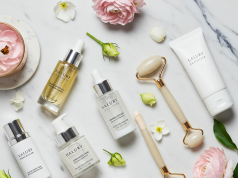The Ultimate Guide to Achieving Radiant Skin: Top Beauty Tips for a Glowing Complexion
Every person dreams of a complexion that glows with health and vitality. Radiant skin not only boosts confidence but also reflects overall wellness. Whether you’re preparing for a special event or simply want to look refreshed day after day, incorporating the right habits into your routine can transform dull, tired skin into a luminous canvas.
This detailed guide dives into proven strategies—from understanding your skin type and refining your daily regimen to nutrition, beauty sleep, and expert makeup hacks. You don’t need an arsenal of expensive products or elaborate treatments to achieve a natural glow. Instead, focusing on core principles will empower you to build a sustainable routine that adapts to your lifestyle and unique needs.
We’ll explore the fundamentals of cleansing, toning, moisturizing, and sun protection, plus insider tips on hydration, dietary choices, and stress management. You’ll also discover simple DIY masks and when to seek professional services for that extra boost. Ready to unveil your best skin yet? Let’s get started on this journey to radiance.
By blending science-backed skincare with holistic wellness—and a splash of creativity—you’ll develop a personalized beauty blueprint. Whether you’re a skincare beginner or a seasoned enthusiast, these actionable steps will help you reveal a luminous, healthy complexion that stands the test of time.
1. Understanding Your Skin Type
The first step toward glowing skin is identifying your skin type. Common categories include oily, dry, combination, sensitive, and normal. Each type has distinct characteristics: oily skin often appears shiny with enlarged pores; dry skin may feel tight or flaky; combination skin mixes oily zones (usually the T-zone) with dry cheeks; sensitive skin reacts easily to new products or environmental factors; and normal skin is balanced with few issues.
To determine your type, start with a gentle cleanse and wait an hour without applying any products. Observe how your skin behaves. Shine indicates oiliness, tightness signals dryness, and patches of both suggest combination. If you notice redness or stinging, you likely have sensitive skin. Knowing your type guides product selection and ensures you target your skin’s specific needs.
Oily skin benefits from lightweight, non-comedogenic formulas and ingredients like salicylic acid that regulate sebum production. Dry skin thrives with richer creams, humectants such as hyaluronic acid, and occlusives like shea butter to lock in moisture. Combination and normal skin can adapt to a balanced routine, while sensitive skin owners should look for fragrance-free, hypoallergenic labels.
Once you understand your skin type, tailor your routine around it. This focused approach prevents irritation, imbalance, and breakouts—paving the way for a consistently radiant complexion.
2. Building a Daily Skincare Routine
A consistent skincare routine is the cornerstone of healthy, glowing skin. Begin with cleansing to remove makeup, dirt, and bacteria. Choose a gentle, pH-balanced cleanser that won’t strip natural oils. Double cleansing at night—first with an oil-based formula to dissolve sunscreen and makeup, then with a water-based cleanser—ensures a truly clean slate.
Next, apply a toner or essence. These products help balance skin pH, deliver hydration, and prepare the skin for active ingredients. Popular options include rose water toners for soothing effects or BHA toners for light exfoliation. Always follow with a treatment serum tailored to your concerns, such as vitamin C for brightening or retinol for cell turnover.
Moisturizing is essential, even for oily or acne-prone skin. Lightweight, gel-based moisturizers can provide hydration without clogging pores, while creamier options repair and strengthen the skin barrier in drier complexions. Finish your morning routine with broad-spectrum SPF 30 or higher to protect against UV damage—the number one cause of premature aging and hyperpigmentation.
Adjust your regimen seasonally and listen to your skin’s signals. On colder days, you might swap to a richer moisturizer; during humid months, opt for lighter textures. Consistency and gentle adjustment, rather than drastic changes, yield the best long-term results.
3. Nutritional Strategies for Glowing Skin
True beauty often begins from within. A balanced diet rich in antioxidants, healthy fats, and hydrating foods supports skin elasticity, combats inflammation, and enhances luminosity. Berries, leafy greens, nuts, and seeds are antioxidant powerhouses that protect cells from free radical damage.
Omega-3 fatty acids found in fatty fish, flaxseed, and walnuts help maintain the skin’s lipid barrier, reducing dryness and sensitivity. Probiotics in yogurt, kefir, and fermented vegetables contribute to a balanced gut microbiome, which in turn can improve inflammatory skin conditions like acne and eczema.
Staying well hydrated plays a critical role in maintaining skin suppleness. Aim for eight glasses of water per day, and boost intake with hydrating fruits and vegetables such as cucumbers, watermelon, and celery. Limit excessive caffeine and alcohol, which can dehydrate the skin and impair its natural barrier function.
Remember that supplements—like vitamin D, zinc, and collagen peptides—can support your diet, but they’re no substitute for whole foods. Consult a healthcare professional before starting any supplement regimen to ensure optimal dosage and avoid interactions.
4. The Role of Beauty Sleep and Stress Management
Never underestimate the power of rest. During sleep, your body repairs and regenerates skin cells, boosts collagen production, and balances hydration. Aim for 7 to 9 hours of quality sleep each night. Create a calm bedtime routine: dim the lights, avoid screens an hour before bed, and consider silk pillowcases to reduce friction and prevent fine lines.
Chronic stress elevates cortisol levels, which can lead to breakouts, inflammation, and dullness. Incorporate relaxation techniques—such as meditation, deep-breathing exercises, or gentle yoga—into your daily schedule. Even brief, mindful pauses can help reset your nervous system and minimize stress-induced skin issues.
A consistent sleep schedule reinforces your circadian rhythm, optimizing your skin’s natural repair cycle. If you struggle with insomnia, consider natural sleep aids like chamomile tea or magnesium supplements, after consulting your healthcare provider.
By prioritizing rest and stress relief, you support a healthier complexion that looks refreshed and vibrant each morning. It’s an often-overlooked beauty secret with profound effects on your skin’s appearance.
5. Best Makeup Tips for a Natural, Radiant Look
Makeup can enhance your glow when applied strategically. Start with a nourishing primer to blur imperfections and create a smooth canvas. Look for primers with light-reflecting particles or hydrating ingredients that prolong makeup wear and maintain luminosity.
For foundation, choose formulas labeled dewy, luminous, or satin finish—these tend to impart a healthy sheen. Apply sparingly with a damp beauty sponge or fingers, focusing on areas that require coverage. Build in thin layers rather than one heavy coat to avoid cakiness.
A cream blush and highlighter duo can mimic your skin’s natural flush and glow. Dab cream blush on the apples of your cheeks and blend toward your temples. Layer a liquid or cream highlighter on high points—cheekbones, brow bones, and the bridge of your nose—to accentuate light reflection without glitter overload.
Set your look with a misting spray to meld layers together and reduce powdery residue. If you need extra longevity, apply a light dusting of translucent powder under the eyes and along the T-zone only. The result is a fresh, radiant finish that looks like real skin.
6. DIY Natural Beauty Treatments at Home
Natural ingredients from your kitchen can deliver salon-worthy results without harsh chemicals. A simple honey and yogurt mask soothes irritation and gently exfoliates thanks to honey’s antibacterial properties and yogurt’s lactic acid. Mix equal parts, apply for 15 minutes, then rinse with lukewarm water.
For dry patches, blend avocado with a teaspoon of olive oil and honey. Avocado’s beneficial fats and vitamins nourish deeply, while olive oil seals in moisture. Leave on for 20 minutes before gently wiping away with a warm cloth.
An oatmeal scrub combines ground oats with a little water or milk to buff away dead cells without over-exfoliating. This is ideal for sensitive skin types. Oats also contain anti-inflammatory compounds that calm redness and itchiness.
Always patch-test new treatments and limit usage to once or twice weekly. These DIY rituals can complement your core routine and enhance your glow naturally, saving money while minimizing exposure to synthetic additives.
Conclusion
Achieving radiant skin is an ongoing journey that blends effective skincare, nourishing nutrition, adequate rest, and mindful beauty practices. By understanding your skin type, committing to a tailored routine, and embracing holistic wellness habits, you can reveal a healthy, glowing complexion from within.
Experiment with the tips and DIY treatments outlined here, track what works best, and adjust as your skin evolves. Consistency and patience are key. Over time, you’ll enjoy renewed confidence and a luminous glow that reflects your inner vitality.
Now it’s your turn—start integrating these strategies today and let your natural beauty shine through every season.









